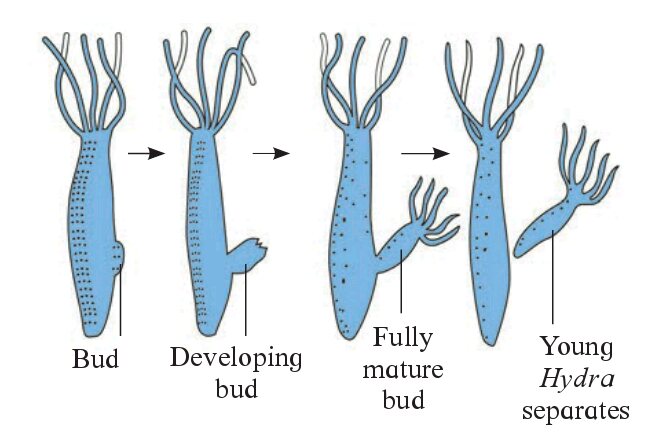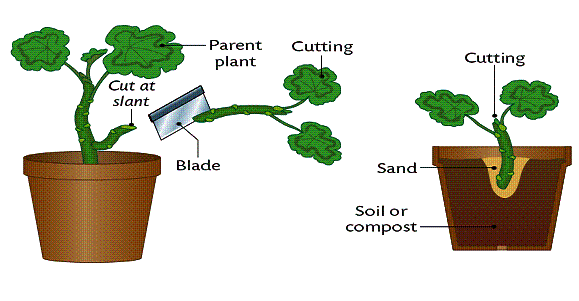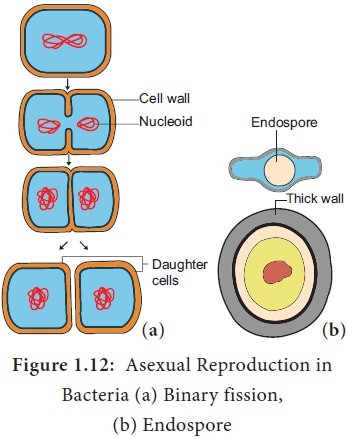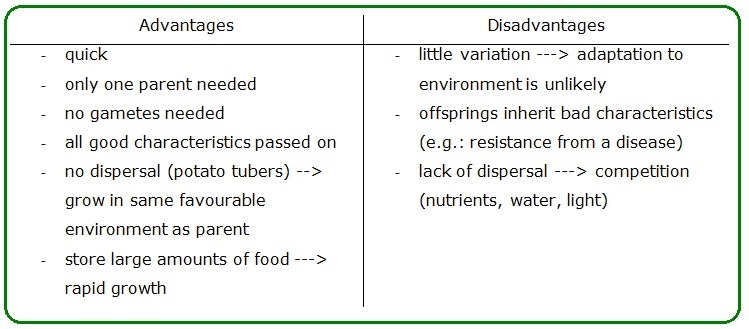Asexual Reproduction in Animals | Types, Advantages & Examples
Definition of Asexual Reproduction
Asexual reproduction is the ability of an organism to produce offspring with no genetic contribution by a male. Asexual reproduction can also be described as “asexual propagation” and referred to as apomixis. Asexually reproducing organisms has one parent only to represent their genes in all offspring equally. Asexual reproduction does not need fertilization so that the offspring is all of a similar size. Asexual reproduction is more helpful than sexual reproduction because it takes less time to produce new individuals, eases the difficulty of parental care (for organisms that reproduce by themselves), and reduces the risk of extinction.

We can divide asexual reproduction into three types based on how each parent contributes to the next generation:
1) Gamete (Binary fission, fragmentation, or budding);
2) Germ cells (Parthenogenesis, apomixis, and hybridogenesis);
3) Zygote (Spores, indirect development).
Types of Asexual Reproduction
There are many ways to reproduce asexually, such as:
- Binary Fission :
This is a type of asexual reproduction where an organism splits in two. This can happen as a result of cell division or by releasing a new bud.

- Budding.
This is a type of asexual reproduction where an organism splits off from another. A new bud forms and eventually becomes an adult. This happens when the parent has two identical genes, one in each cell. A new bud will then form and grow into a similar plant.

- Vegetative Propagation
This can happen when a new plant grows from an existing plant. The plant produces roots, and the recent shoot develops into a separate adult plant. This is common in some plants, like strawberries and ginger, etc. Vegetative propagation is only possible when there are two identical copies of genes.

- Sporogenesis
This type of asexual reproduction forms spores from the parent and grows into new individuals without fertilization. This can also refer to pollen produced by seed plants but is not involved in sexual reproduction. Spores are usually made in large quantities and aid in the germination of new plants.

- Fragmentation
This is a type of asexual reproduction where an organism splits off from another, but parts remain on the parent and eventually regrow into two distinct organisms. For example, some sponges reproduce by fragmentation as one part grows to become a new sponge.
- Agamenogenesis.
This is a type of asexual reproduction where an embryo develops without fertilization. The embryo will then become a new individual. This process only happens in some invertebrates, like aphids and water fleas.
- Hybridogenesis
This is a type of asexual reproduction where offspring are formed from crosses between different species. For example, two separate species will combine their DNA to create offspring.
- ParthenogenesisÂ
This type of asexual reproduction is where an unfertilized egg develops into a new individual. This process can happen in some vertebrates, like sharks and snakes, and some invertebrates, like wasps and bees.
- ApomixisÂ
This is a type of asexual reproduction where organisms produce offspring without fertilization. This usually happens when the egg is spore-like, with genetic material but no cell division.
Examples of Asexual Reproduction
- BacteriaÂ
Bacteria reproduce asexually through binary fission. Binary fission is when one cell splits into two cells. Each cell then becomes an individual organism with the same genetic material as the original organism. The organisms separate, and each grows independently from the other.

- Fungi-like Protest
The fungi-like protest”, “Acanthamoeba castellanii,” and euglena. Asexual reproduction in Amoeba castellanii is the process of growth by which a new individual is created from an existing cell without fertilization or genetic recombination, known as mitosis. “Acanthamoeba” reproduce asexually through binary fission, similar to the process by which bacteria produce.
- Euglena
Euglena reproduces through a type of reproduction called “cyclical parthenogenesis”. This is where one organism gives rise to another via mitosis, but in this case, the daughter cells are not identical twins. Instead, they are male or female. As a result, the two new organisms must mate to produce a new generation.
- Sea AnemonesÂ
Sea anemones reproduce asexually through the process of fragmentation. An organism splits into two or more parts, and each piece becomes a new individual. The unique individuals are genetically identical to the original organism.
- PlanariansÂ
Planarians reproduce by a type of asexual reproduction called fission. An organism splits into two or more parts, and each piece becomes a new individual. The new individuals are genetically identical to the original organism.
- Slime MoldsÂ
Slime molds reproduce asexually by the process of sporulation. This is when spores are formed and grow into new individuals without fertilization. They usually produce the spores in large quantities and aid in the germination of new plants.
- SpongesÂ
Sponges reproduce asexually through fragmentation. An organism splits into two or more parts, and each part becomes a new individual. The new individuals are genetically identical to the original organism.
- TardigradesÂ
Tardigrades reproduce by fission (splitting). This is when an organism splits into two or more parts, and each part becomes a new individual. The new individuals are genetically identical to the original organism.
- TermitesÂ
Termites reproduce asexually through fission when an offspring develops from an existing cell that separates into two or more parts. The new individuals are genetically identical to the original organism.
- New Mexico Whiptail LizardsÂ
The New Mexico whiptail lizard reproduces by parthenogenesis, a type of asexual reproduction where an unfertilized egg develops into a new individual. This process can happen in some vertebrates, like sharks and snakes, and some invertebrates, like wasps and bees. The all-female whiptails reproduce by laying unfertilized eggs that develop into healthy offspring with minimal genetic diversity. We can consider this a disadvantage because it makes them more susceptible to harmful mutations in the future.
However, the all-female population has an advantage over other species because it eliminates males’ needs and accompanying reproductive processes, risky and time-consuming. In this way, asexual reproduction can be more successful than sexual reproduction in some instances.
You may also like:Â Â DNA Translation |Introduction, Steps & Diagram
Advantages and Disadvantages of Asexual Reproduction
Advantages of Asexual reproduction
- There is no need for a mate so that asexual reproduction can happen faster and more efficiently.
- There is no risk of genetic defects occurring in the offspring since they are genetically identical to the parent organism.
- Asexual reproduction can occur in environments where sexual reproduction is impossible, like extreme temperatures or high altitudes.
- Asexual reproduction prevents the offspring from being exposed to disease or parasites that might exist in other regions of the world. This is because they are genetically identical to the parent organism, so there is no worry about them having a higher risk of catching those diseases and parasites than their parent did before traveling.
- Asexual reproduction helps organisms reproduce quickly and allows the species to move faster throughout their environment.
- In some cases, sexual reproduction requires more energy for the parent organism – it is energetically expensive to find a mate, copulate, produce eggs or sperm, or care for offspring after they are born. On the other hand, asexual reproduction does not require any of those things and is more energetically efficient.
Disadvantages of Asexual reproduction
- In some cases, asexual reproduction can lead to the loss of genetic variation within a species. This can be harmful if something happens to the parent organism and cannot reproduce sexually anymore. This is because the lost genetic variation can never be recovered from another parent unless it produces sexually.
- Asexual reproduction by parthenogenesis results in offspring with half as much genetic diversity as their parents, which means they will have a higher risk of inheriting any harmful mutations and not adapting to future changes in their environment.
- Asexual reproduction can lead to the development of new species that are not as genetically diverse as their ancestors, making them less resilient to future changes in their environment.
- In some cases, asexual reproduction can be less efficient than sexual reproduction because it does not mix up the gene pool as much and can lead to the loss of beneficial genes.


